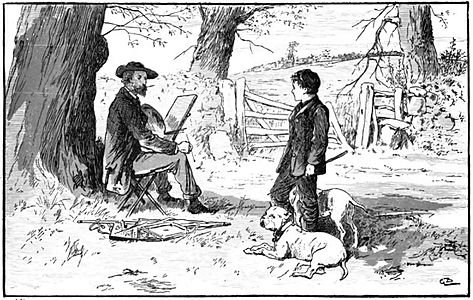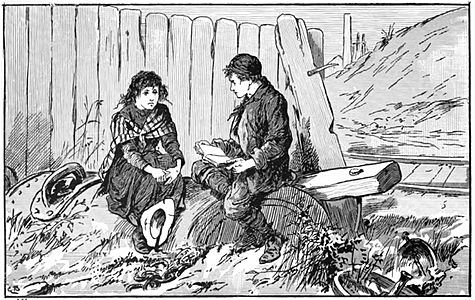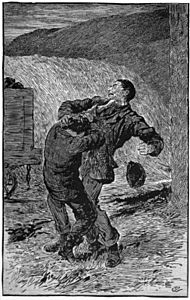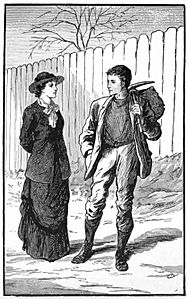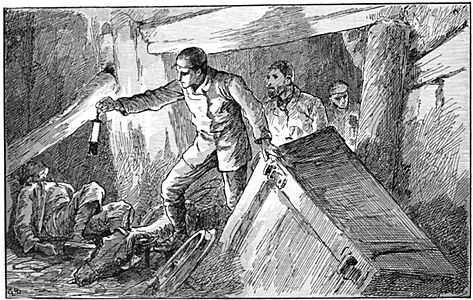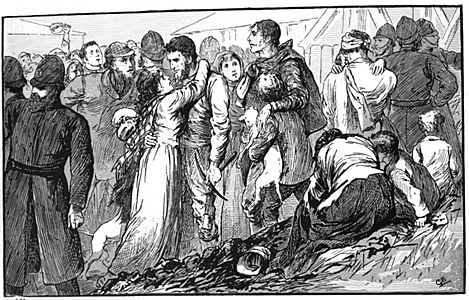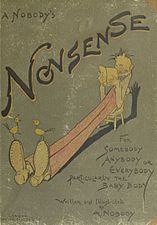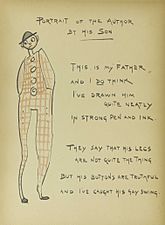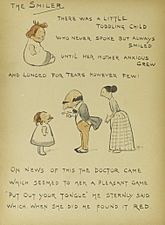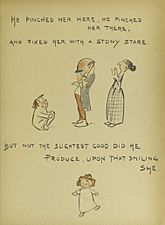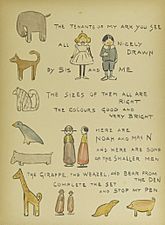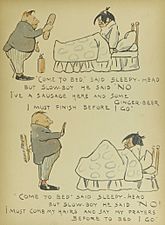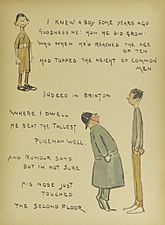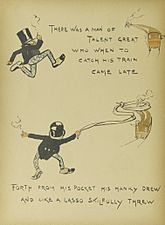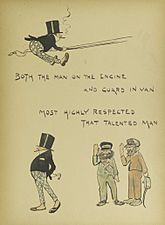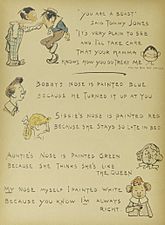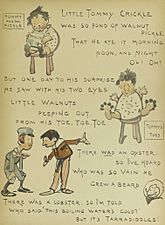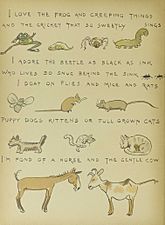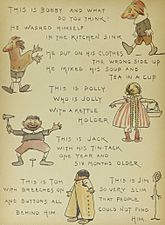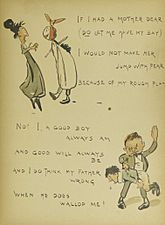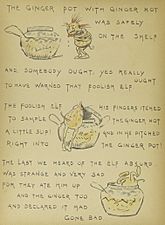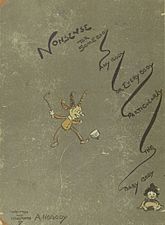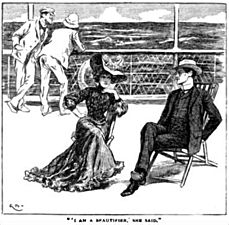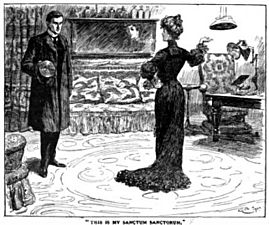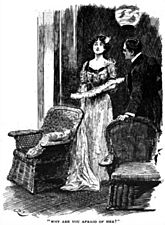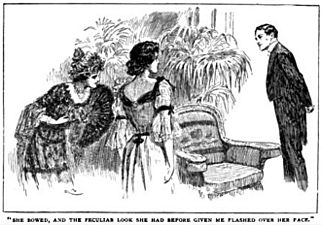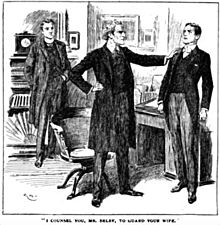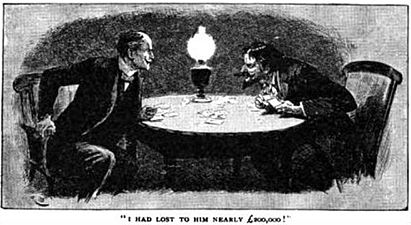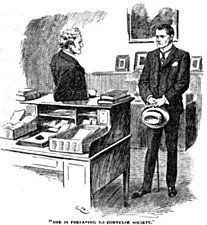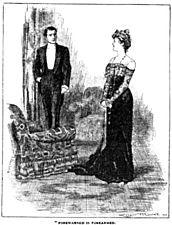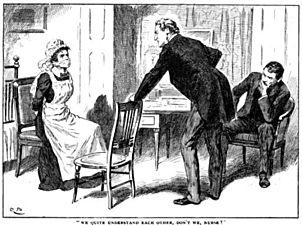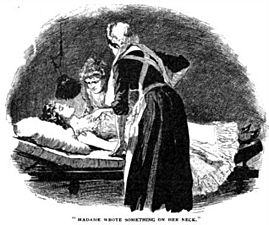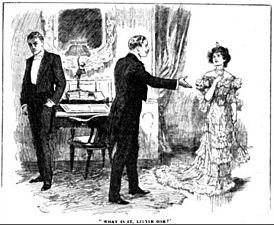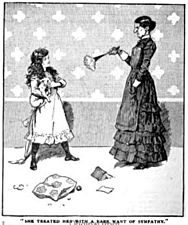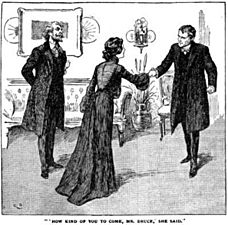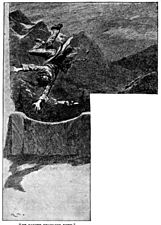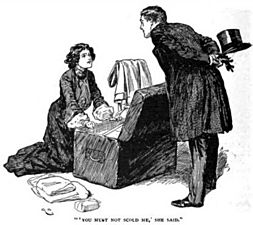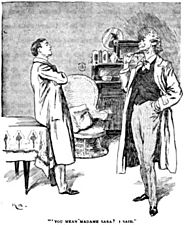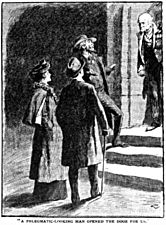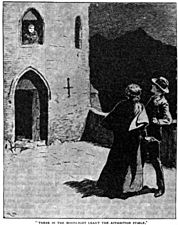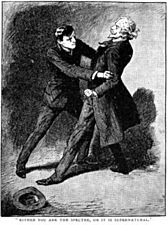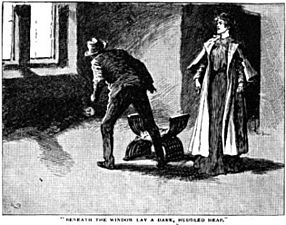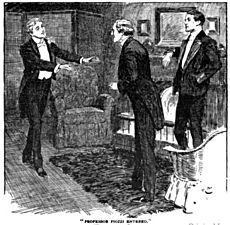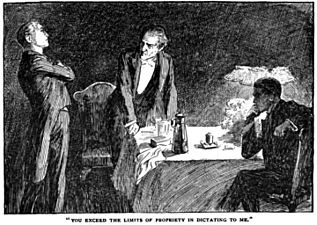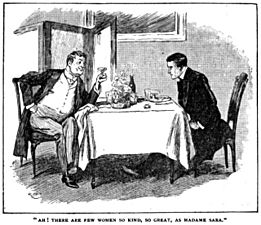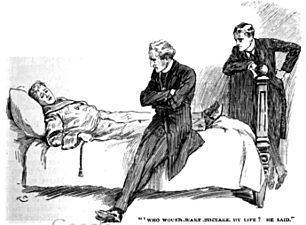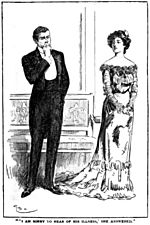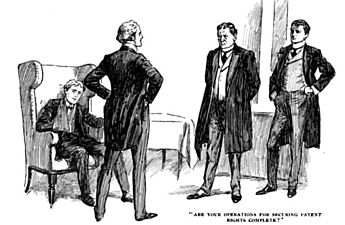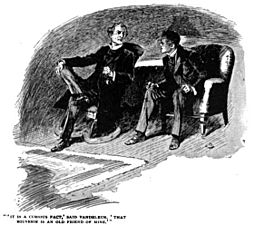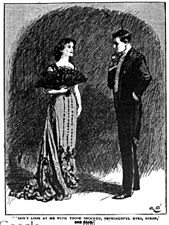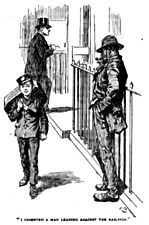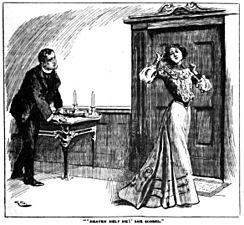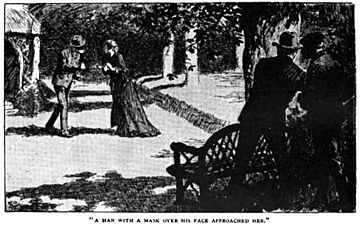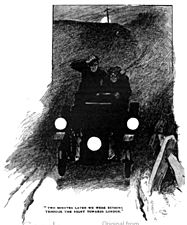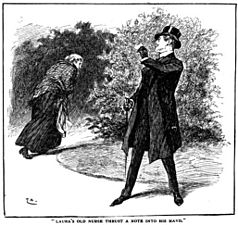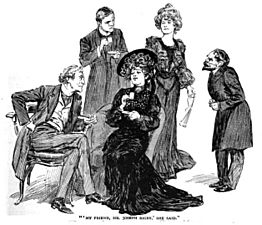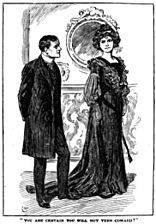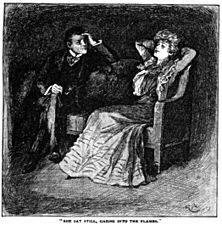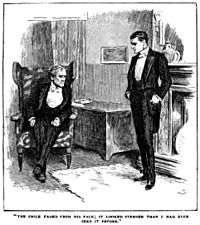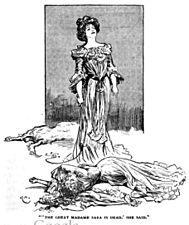Gordon Browne facts for kids
Quick facts for kids
Gordon Frederick Browne
|
|
|---|---|
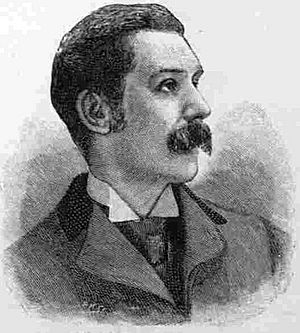
Gordon Browne in 1892
|
|
| Born | 15 April 1858 |
| Died | 27 May 1932 (aged 74) |
| Nationality | British |
| Other names | Signed illustrations GB |
| Occupation | Illustrator and artist |
| Years active | 1875 – 1932 |
| Known for | Illustrating children's books |
|
Notable work
|
The 552 illustrations and 32 full-page etchings he did for The Henry Irving Shakespear (1895) |
Gordon Frederick Browne (born April 15, 1858 – died May 27, 1932) was a talented English artist. He became famous for illustrating many children's books in the late 1800s and early 1900s. Gordon Browne was very careful with his work. He made sure his drawings were always correct and detailed. He illustrated about six or seven books every year. Plus, he created many drawings for magazines!
Contents
Early Life
Gordon Browne was born in Banstead, England. His father, Hablot Knight Browne, was also a well-known book illustrator. His father was famous for illustrating books by Charles Dickens. Gordon went to private schools and then studied art at the Heatherley School of Fine Art. He also attended the South Kensington Schools. He always insisted on drawing from real life during his art studies.
Work
Browne mainly worked with watercolour paints and pen and ink. He was a member of important art groups like the Royal Institute of Painters in Water Colours (RI). He also helped start the Royal Society of British Artists (RBA).
Some people thought Gordon Browne started drawing for money when he was very young. This was because his father was sick. However, it's more likely that his first known drawings appeared in 1875. At that time, he would have been 17 years old.
Gordon Browne's first book illustrations were for The Day After the Holidays in 1875. This was a school story by Ascott R Hope. After this, he got many requests to illustrate books and magazines. He even drew some Christmas cards. He learned how to draw on wood, which led him to work with Blackie's, a London publisher. His first book for Blackie's was Facing Death: The Hero of the Vaughan Pit (1882) by G. A. Henty.
From the 1880s, Browne became one of Britain's busiest illustrators. He drew for many boys' stories and novels. It's believed he created around 3,660 images in total! Browne also wrote some books himself. He showed his artwork in many exhibitions, with over 200 pieces displayed during his life.
Book Illustration
Gordon Browne illustrated many books each year. He did a lot of research for his historical drawings. He collected real armour, helmets, pistols, daggers, swords, uniforms, and even saddles. When he drew, he would look at these items. This helped him make sure his pictures of old clothes and weapons were very accurate.
He also made sure he understood the stories he was illustrating. He would read the text carefully, sometimes twice. This helped him find all the small details for his drawings. People knew how careful he was. Once, a writer named George Bernard Shaw even asked if Browne's drawing or the story's text was correct about a character!
Example of Book Illustration
Browne illustrated fourteen novels by G. A. Henty. This included the first seven books published by Blackie and Son. One of these was "Facing Death: The Hero of the Vaughan Pit: A Tale of the Coal Mines." It was first published in 1882. The first version had six drawings by Gordon Browne. A second version came out the same year with eight illustrations, which you can see here.
Self-Illustrated Books
Gordon Browne also wrote and illustrated several books for young children. He used the pen name A. Nobody for these. The pictures in these books were simpler, perfect for very young readers. Here's an example of his work from one of these books.
Magazine Illustration
Browne also drew for many different magazines. One example is the story The Sorceress of the Strand. This story appeared in The Strand Magazine in 1902 and 1903. Gordon Browne created many illustrations for this story, showing how much work went into magazine art.
Example of Magazine Illustration
Death
Gordon Browne passed away on May 27, 1932. He died at his home in Richmond, Surrey, due to heart failure.
Legacy
Even though Gordon Browne was very talented, he didn't become as famous as some other artists of his time. This was partly because his work appeared in so many different, often cheaper, books. He wasn't known as the main artist for just one very famous author.
However, experts agree that Gordon Browne was one of the most important illustrators of his era. He was known for his energy, skill, and reliability. He created a huge amount of artwork. His drawings were always lively and very accurate. Children for many years loved the classic stories he illustrated. Many writers were very happy to have Gordon Browne illustrate their books. He was truly a gifted artist.


